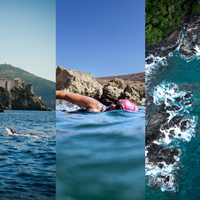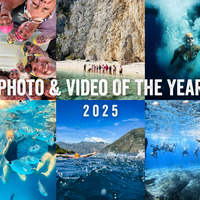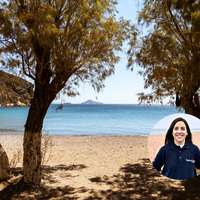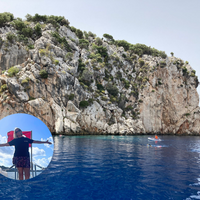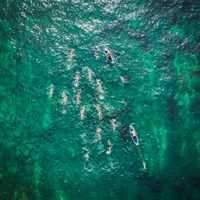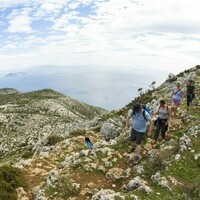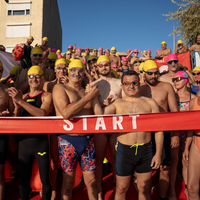Swim: Why We Love the Water is Sherr’s ode to the intrepid challenge of crossing wild places like the Hellespont simply for the joy of swimming.
“The untamed blue waters that define our planet or the boxed-in beauty of pools” are both equally alluring to Sherr, who writes about our very human compulsion to dive in and test the waters.
Channeled by the mythical Leander, Lord Byron swam across the point from Europe to Asia to usher in a new age of open-water swimming. The movement has been championed by women as well as men. Gertrude Eberle and Annette Kellerman conquered the English Channel, while Diana Nyad swam 103 miles of open water from Havana to Key West.
Sherr’s route would wind along an arc from the European town Eceabat, then slightly northeast to compensate for currents, southeast along the shore to the finish line at the Asian seaport of Canakkale. Because of the current, swimmers never cross in a straight line across the Hellespont.
According to Sherr, more swimmers are training for marathon races in oceans, bays, lakes, rivers and channels. A 10-kilometer open-water race at Hyde Park’s Serpentine Lake will be one of the swimming events at the 2012 Olympic Games in London.
More than 50,000 adults have joined US Masters Swimming, which offers workouts, competitions and camaraderie for anyone wanting to improve their strokes or speed. Lynn Sherr joined the national organization to prepare for her August 2011 marathon.
“I, too, like a challenge and want to test my body and mind in these iconic waters.” Sherr prefaces each chapter with an anecdote from her Hellespont swim and shares some history, science and lore about the world of swimming.
Sherr’s preparation goes back to patient camp counselors who first urged her to plunge into lake waters as well as to pond frogs that mesmerized her with their rhythmic kicks. The frog observations provided a visual for honing the top swim stroke in her arsenal, the breastroke.
She devotes a chapter to the four official swim strokes: fly, back, breast and free with somewhat of a breaststroke bias.
For more than three hundred years, the breaststroke was effectively the only way Europeans and Americans swam across any body of water.
Sherr writes of the British Swimming Society’s 1844 invitation to a group of Ojibwa Indians to share their expertise in the front crawl. She alleges that the English swimmers won an improv race against the Ojibwa… doing the breastroke.
An affable learner, Sherr trained with Terry Laughlin, creator of Total Immersion, a strategy for building core balance and whole body streamlining. Laughlin helped Sherr stop powering her arm muscles to push water and instead use them to softly separate water into a sleeve through which to slip past.
Sherr picked up lap etiquette (swim counterclockwise; to pass the swimmer in front, tap gently on the foot) as well as swimming lingo and learned that the art of competitive swimming is “neck up”—won or lost by your state of mind. She devotes several paragraphs to the dysfunction of competition and how it might destroy the love of the water.
At a Masters swim camp in Curaçao, Sherr talks with fellow trainee Dr. Oliver Sacks. “I never knew anything so powerfully, so healthily euphoriant,” Dr. Sacks says of the physical, emotional and spiritual rewards of swimming. Of her own trek across the Hellespont channel, Sherr writes:
We did it together, the water and I. It held me up; I pushed myself through. We were partners —always are—because you can’t do it alone. This, then, is why I swim.
Swim by Lynn Sherr is a worthwhile read devoted to the laudable pursuit of swimming in wild, open water as well as the calm of sapphire pools.
Review by Rebecca Aguilar - Book Kvetch

